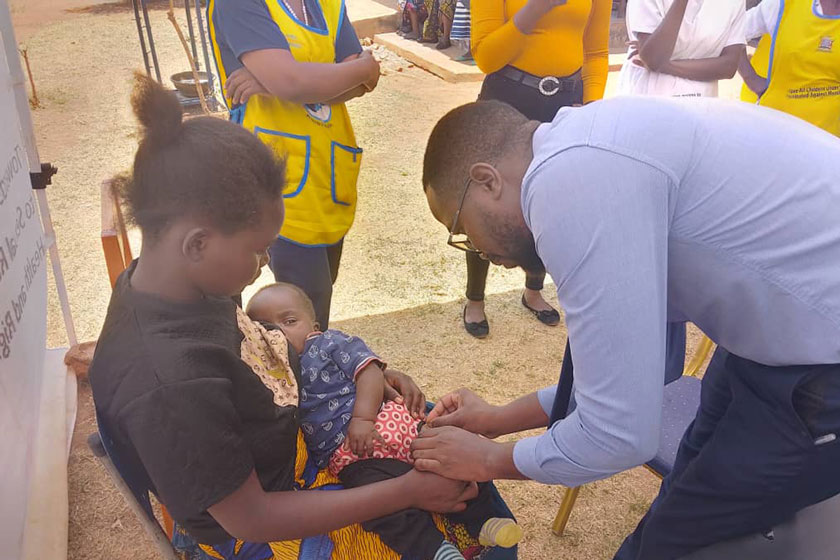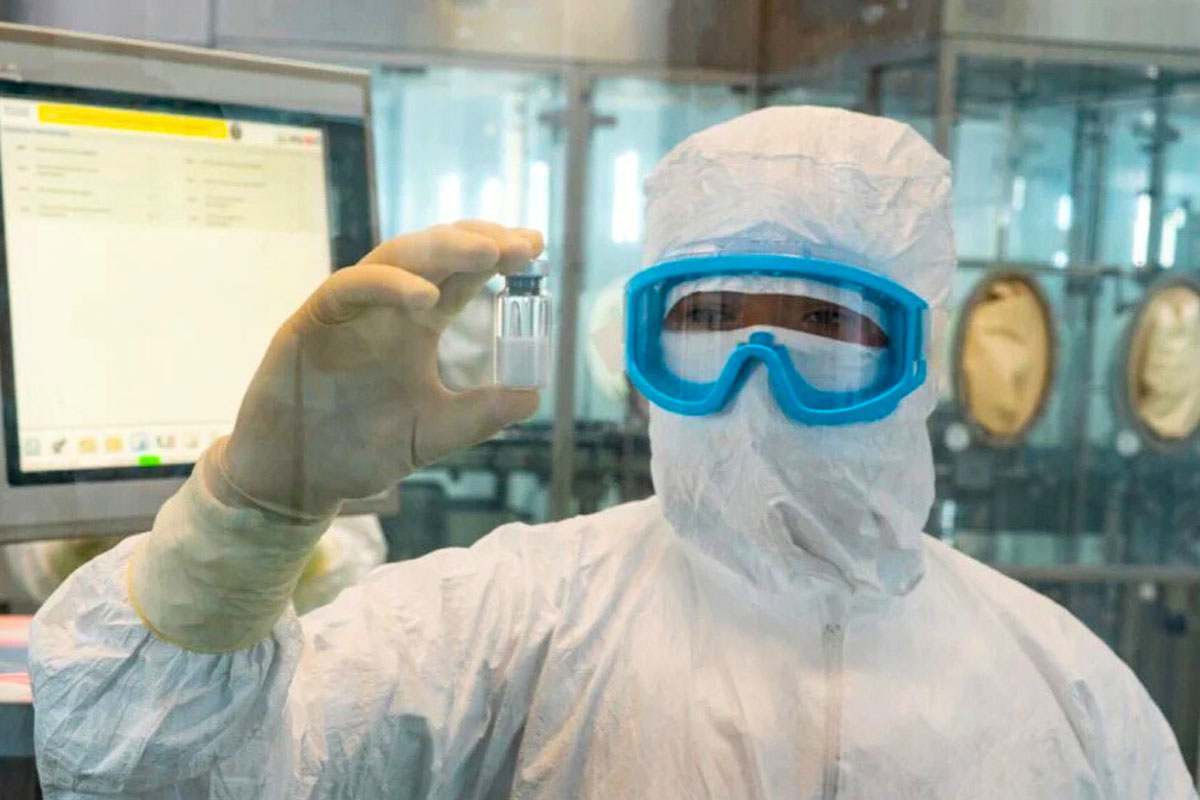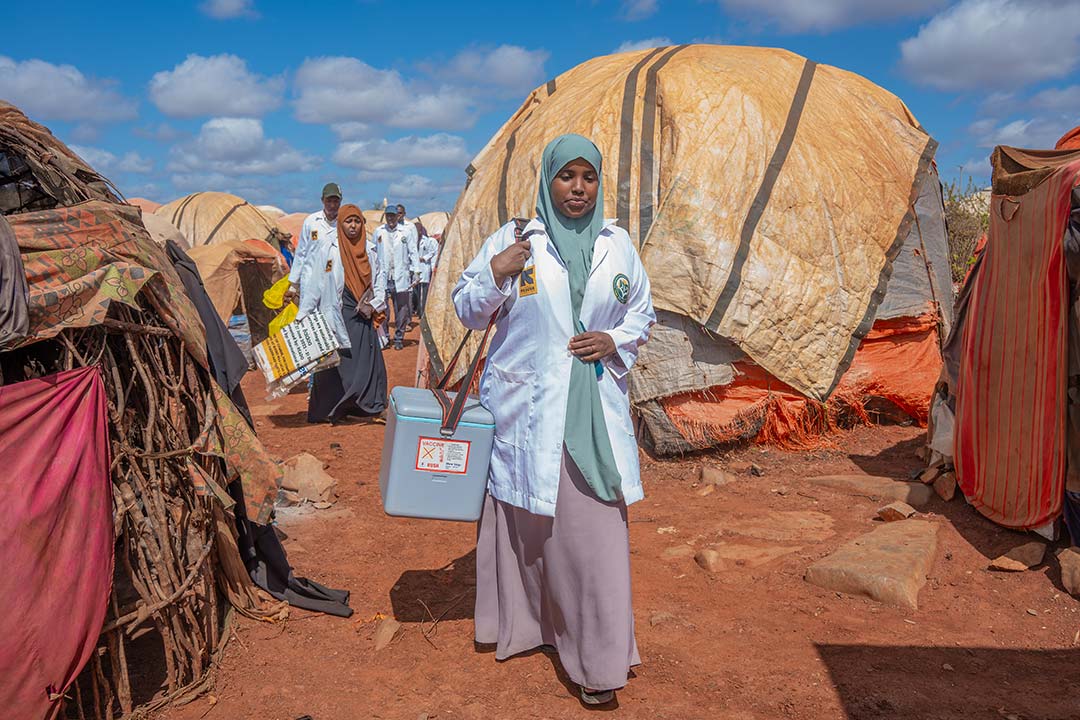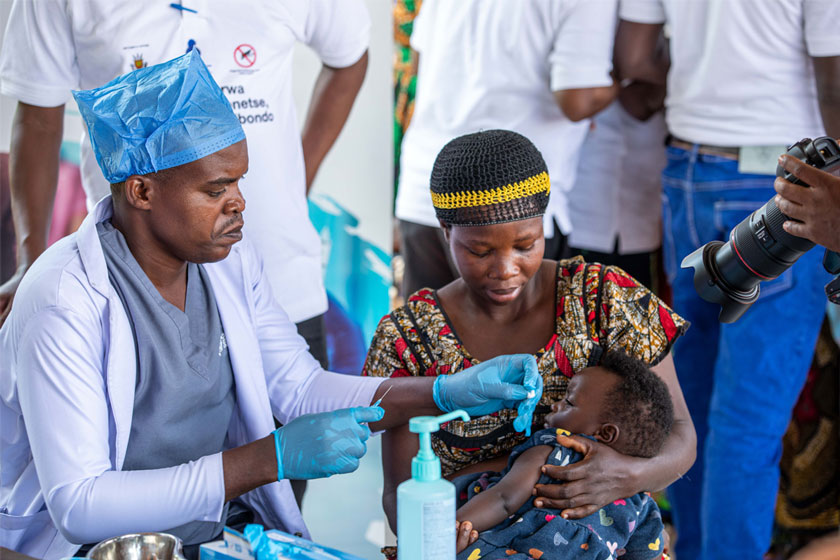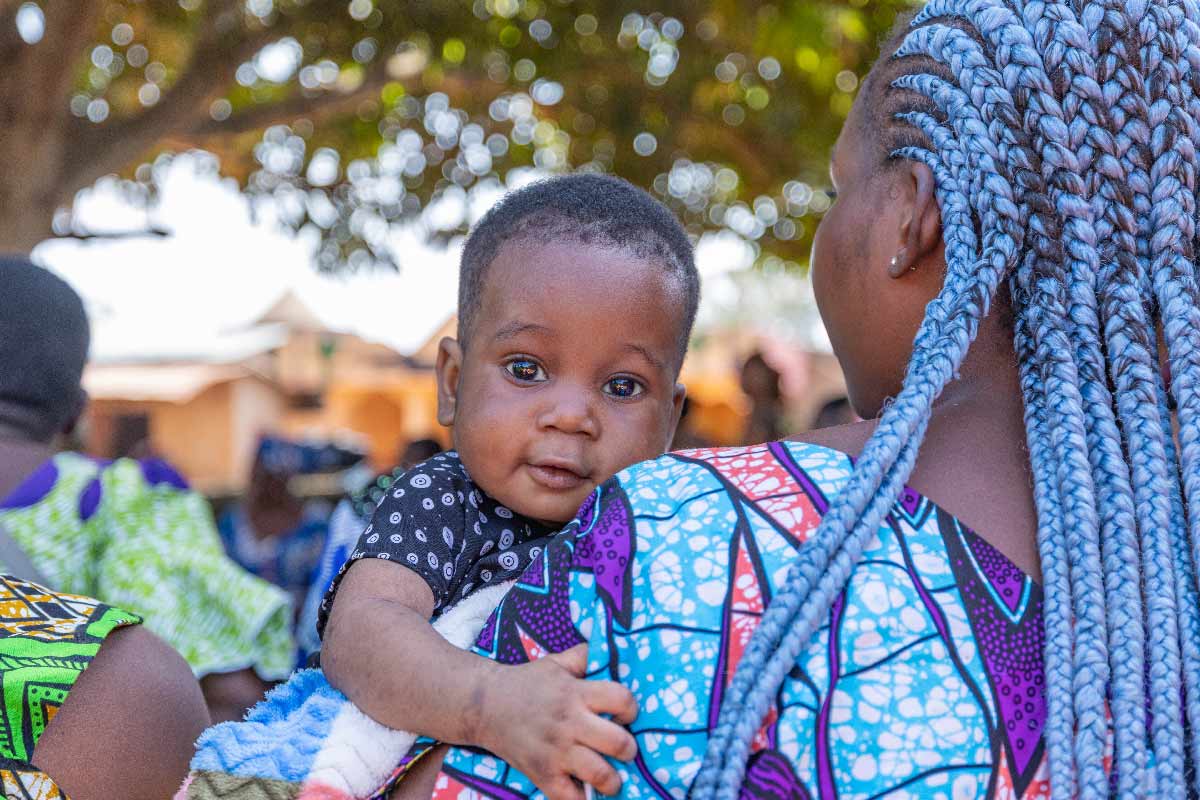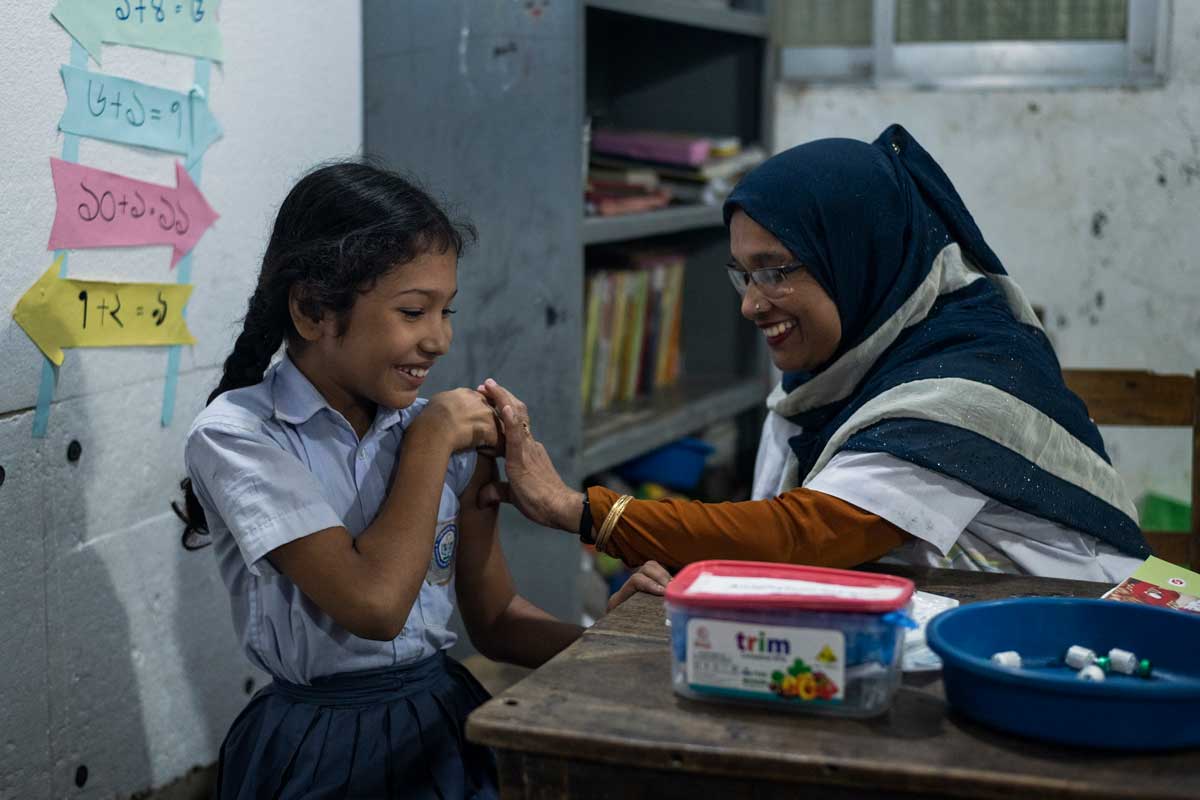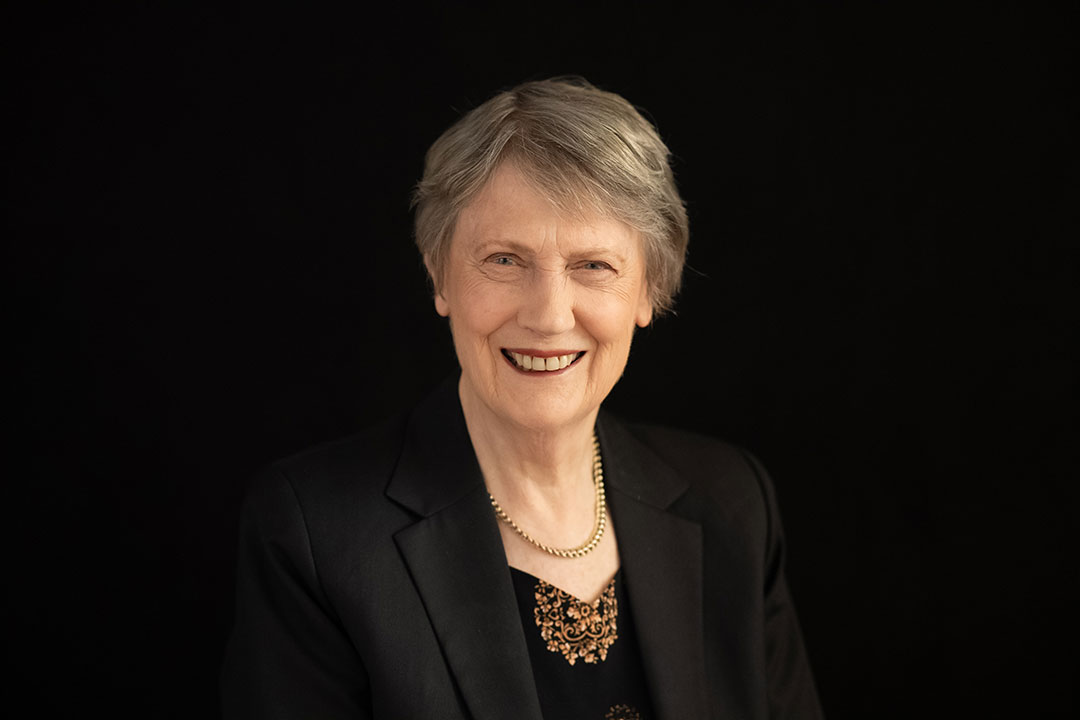Gavi, the Vaccine Alliance: 25 years in 25 moments
It’s been 25 years since Gavi was launched at the World Economic Forum back in January 2000. Here are 25 moments that have shaped its history.
- 24 June 2025
- 9 min read
- by Gavi Staff
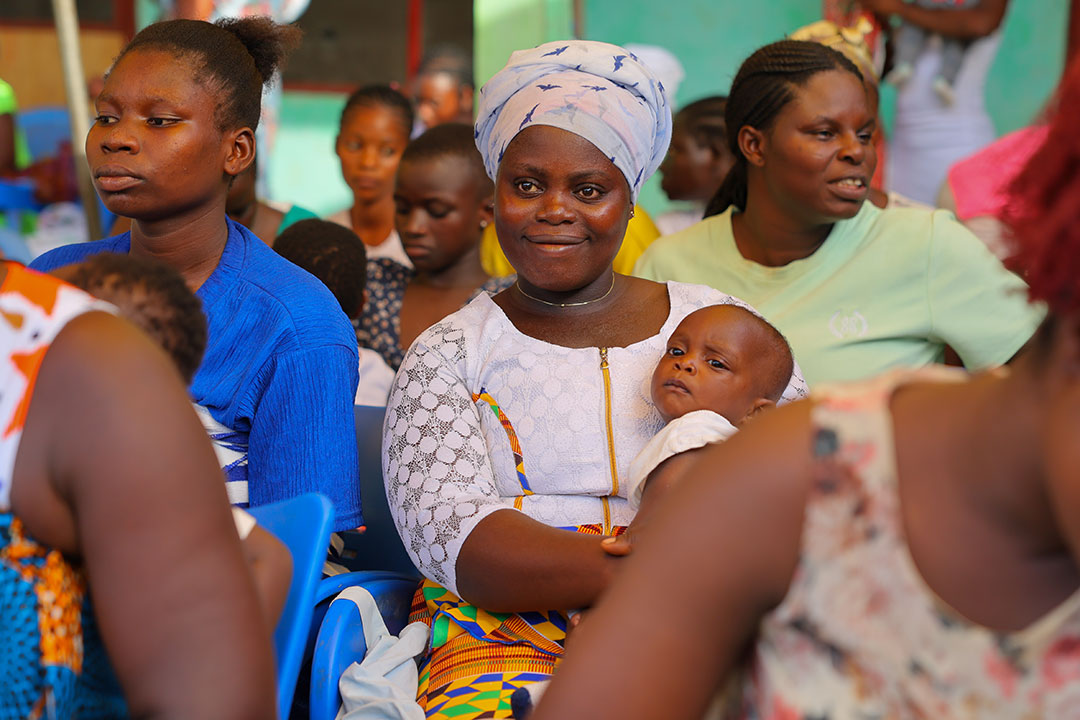
1. 2000: Gavi, the Vaccine Alliance is launched
At the dawn of the new millennium, a new kind of global health organisation was born. Launched in Davos, Switzerland, in January 2000, Gavi, The Vaccine Alliance, was established to tackle the urgent problem of children in poorer countries not receiving the vaccinations they needed. This new Alliance would bring together the expertise of founding partners the World Health Organization (WHO), UNICEF, the World Bank and the Gates Foundation, as well as governments, the private sector and civil society, to address this market failure and increase access to vaccination for all children.
2. 2001: Nelson Mandela becomes the first Chair of The Vaccine Fund
In 2001, the former South African president, Nelson Mandela, was appointed inaugural Chair of the Vaccine Fund Board, Gavi’s initial financing arm. His vision, determination, and leadership were credited with helping to drive children’s health to the top of the international agenda and secure funding to pay for millions of vaccines.
3. 2001: Mozambique becomes the first country to receive Gavi-supported vaccines
In April 2001, children in Boane, a town just south of Mozambique’s capital, were offered shots of a new combination vaccine against diphtheria, tetanus, polio and hepatitis B (DTP-hepB), in preparation for the national roll-out of this vaccine the same year.
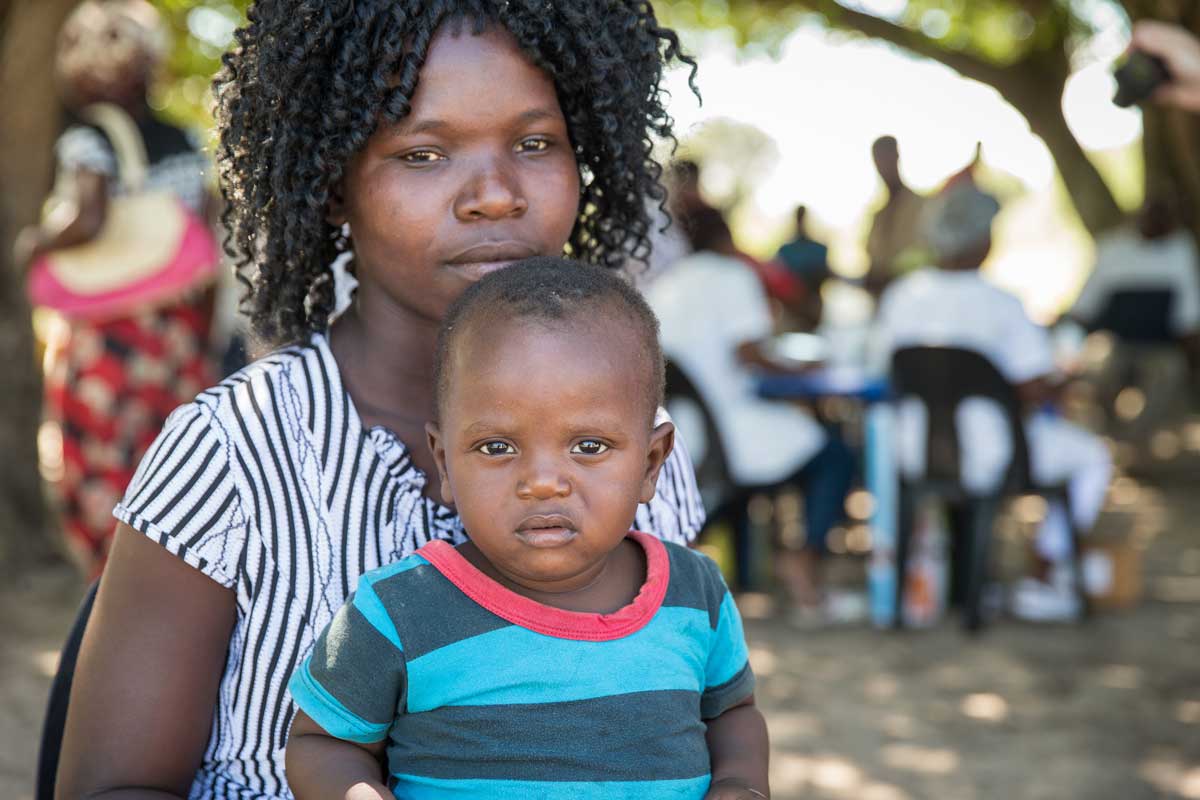
Credit: Gavi/2020/Isaac Griberg
4. 2006: The International Finance Facility for Immunisation is founded
To create a more consistent and predictable source of vaccine funding, the International Finance Facility for Immunisation (IFFIm) receives long-term, legally binding pledges from donor countries and transforms them into bonds, with the World Bank acting as Treasurer. These bonds are then sold to capital market investors for an attractive rate of return, providing an immediate source of funding for Gavi’s immunisation programmes and other initiatives. The first €1,000 bond was bought by Pope Benedict XVI, with almost US$ 1 billion raised by the IFFIm within the first year.
5. 2008: Gavi starts rolling out rotavirus vaccines
In 2008, Bolivia became the first Gavi-eligible country to introduce the monovalent rotavirus vaccine, Rotarix. Before its introduction, rotavirus was a major cause of severe diarrhoea and death in children under five, responsible for almost half of all hospitalisations for diarrhoea in Bolivia from 2006–2008. The following year, WHO recommended that rotavirus vaccination be included in all national immunisation programmes.
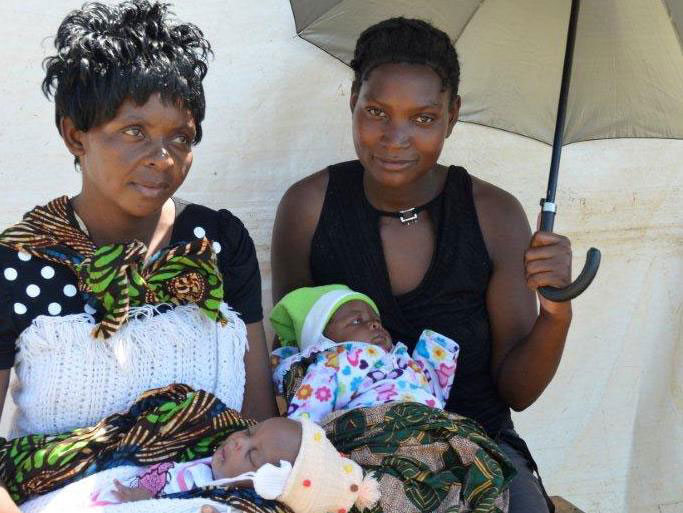
Gavi/2013
6. 2009: Gavi creates the Advance Market Commitment for pneumococcal vaccines
Another innovation pioneered by Gavi is a financing mechanism called the Advance Market Commitment (AMC), which provides an incentive for vaccine makers to produce suitable vaccines in the necessary quantities at an affordable price for developing countries. In 2009, Gavi launched the Pneumococcal AMC, to protect children against pneumococcus bacteria – the leading cause of severe pneumonia and bacterial meningitis worldwide. This AMC aimed to accelerate the development of new pneumococcal vaccines, bring forward the availability of existing vaccines by scaling up production capacity, and accelerate vaccine uptake through predictable vaccine pricing for countries and manufacturers. By December 2019, 60 countries had introduced these life-saving vaccines into their routine immunisation programmes with Gavi support.
7. 2014: Gavi starts funding the global cholera vaccine stockpile
As Gavi has evolved, it has expanded to support responses to health emergencies, including disease outbreaks associated with conflict and natural disasters. In 2014, Gavi began funding the global oral cholera stockpile, a reserve of vaccines available to tackle outbreaks and prevent the spread of cholera in high-risk areas. This support has now expanded to the global stockpiles for Ebola, meningitis and yellow fever vaccines. And these stockpiles are truly global: while Gavi will only fund the roll-out of these vaccines in lower-income countries, any country can access them.
8. 2015: Gavi marks 500 million children reached with vaccines
2015 marked a major milestone for the Vaccine Alliance, with the release of figures estimating that half a billion additional children had been reached with vaccines in the 15 years since its inception, preventing an estimated 7 million deaths.
9. 2016: The first countries transition out of Gavi support
One key aspect of Gavi’s model is sustainability. This means that as nations get wealthier, the proportion of each vaccine funded by the Vaccine Alliance reduces, until eventually countries pass a gross national income per capita threshold at which they fund 100% of the costs of their vaccines. In 2016, the first countries did just that: Bhutan, Honduras, Mongolia and Sri Lanka. Today 19 countries have successfully transitioned out of Gavi support.
Credit: UNICEF Bhutan/2021/DWangchuk
10. 2016: Gavi launches INFUSE
The same year, Gavi launched the Innovation for Uptake, Scale and Equity in Immunisation initiative (INFUSE), to help countries accelerate the introduction of cutting-edge technologies that support the delivery of lifesaving vaccines. It does this by connecting high impact, tried-and-tested innovations to the countries that need them most.
11. 2016: Gavi launches its Cold Chain Equipment Optimisation Platform
Most vaccines need to be kept refrigerated so their ingredients don’t degrade, yet this can be challenging in remote regions or areas without access to electricity. Investing in cold chain infrastructure can help to strengthen immunisation supply chains, ultimately protecting more children against deadly diseases. Launched in 2016, Gavi’s Cold Chain Equipment Optimisation Platform (CCEOP) helped countries to modernise and extend their cold chains, by subsidising the purchase of reliable and high-performing equipment, including new solar-powered vaccine refrigerators.
12. 2016: Rwanda launches the world’s first vaccine deliveries by drone
The innovations kept on coming. In October 2016, Rwandan President Paul Kagame launched the world’s first drone-based vaccine delivery service. Built and operated by the California-based robotics company Zipline, it initially focused on delivering blood for transfusions. However, through a partnership between Gavi, UPS and Zipline, the country quickly expanded this to include vaccines. The service has transformed healthcare in Rwanda, and has since been extended to Ghana, Kenya, Nigeria and Côte d’Ivoire – with more than 23 million vaccine doses delivered by drone to date.
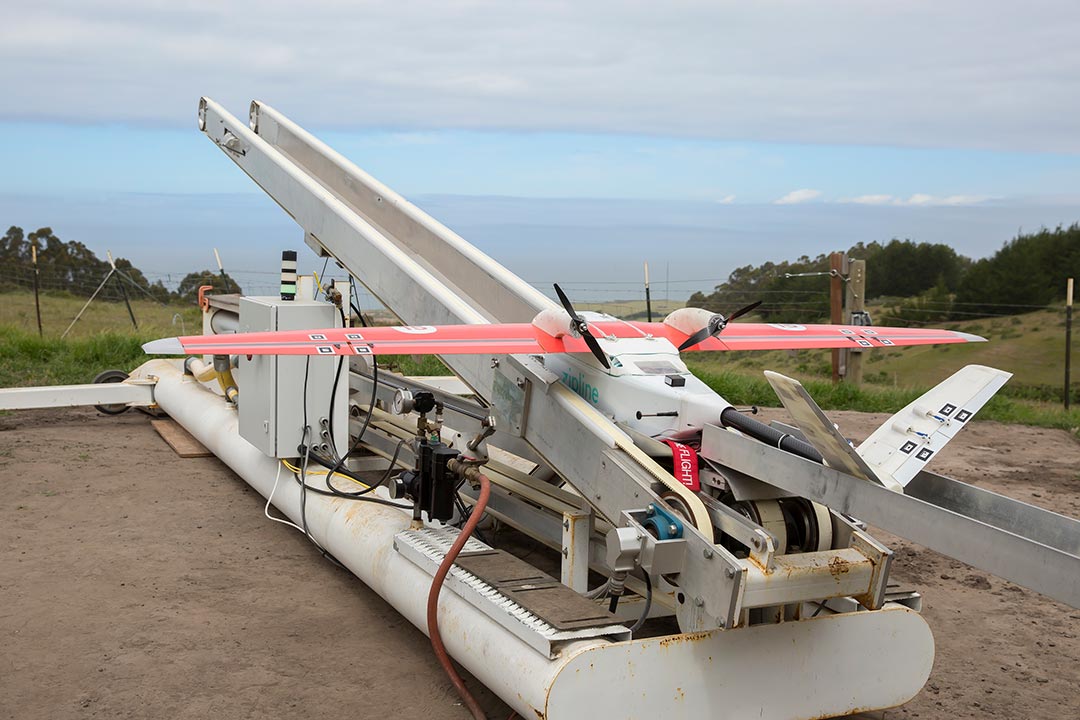
Credit: UPS/2016
13. 2018: Gavi helps roll out the first Ebola vaccine
Although Gavi was initially launched with children’s health in mind, it increasingly helps to protect adults’ health during emergencies. In 2018, Gavi helped roll out the investigational rVSV-ZEBOV vaccine to contain a large outbreak of Ebola in the Democratic Republic of the Congo. This included the purchase of cold chain equipment, deployment of health workers, transport, critical supplies and other incidental costs. Gavi was also instrumental in making doses of this vaccine available through an Advance Purchase Commitment with its developer, Merck, which was designed to incentivise the rapid development of the vaccine and ensure that enough doses were available to create an emergency stockpile.
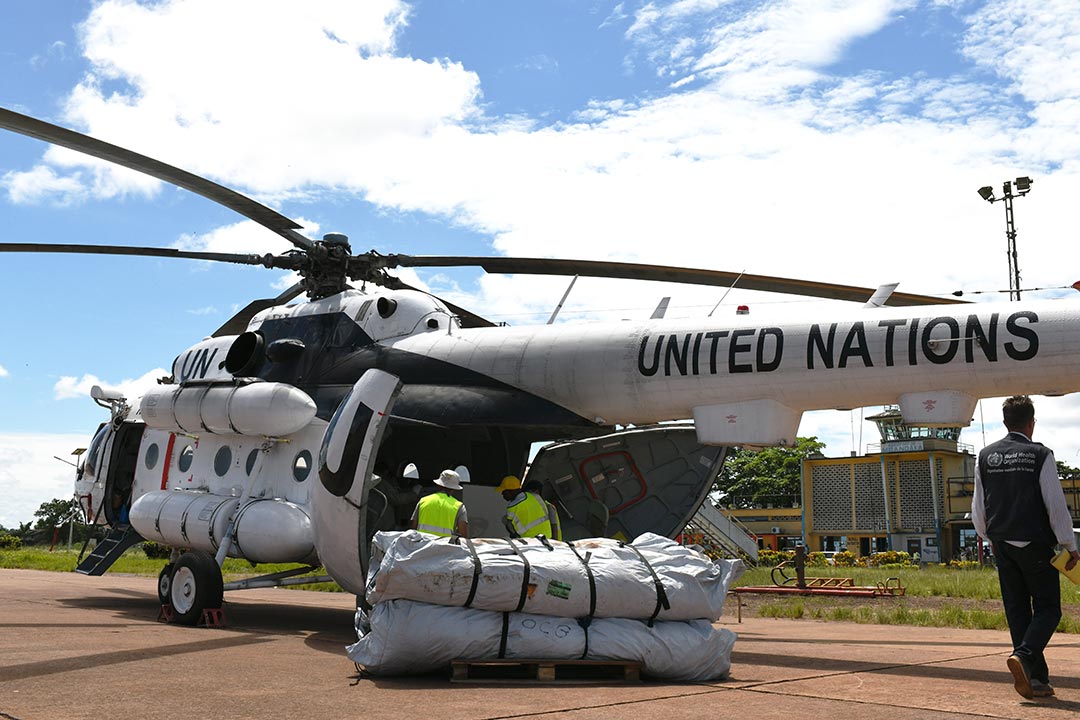
Credit: Gavi/2018/Pascal Emmanuel Barollier
14. 2019: Inactivated polio vaccines reach every country
In 2019, Zimbabwe and Mongolia introduced Inactivated Polio Vaccine (IPV) with Gavi support – the final two countries in the world to do so, and a crucial step towards global polio eradication.
15. 2019: New typhoid conjugate vaccines join Gavi’s roster
Typhoid is a serious illness that disproportionally affects children and low-income communities in Asia and sub-Saharan Africa. With Gavi support, Pakistan became the first country in the world to introduce the typhoid conjugate vaccine into its routine immunisation programme in 2019. This is the first typhoid vaccine that can be given to children as young as six months and provides longer-lasting protection than previous vaccines.
16. 2020: COVAX is launched to fight the worst pandemic in 100 years
In early 2020, the world faced a new infectious disease threat: COVID-19. On 11 March, WHO declared a global pandemic, and the following month, Gavi joined a global collaboration to accelerate the development, production and equitable access to new COVID-19 technologies, known as the Access to COVID-19 Tools Accelerator. COVAX was the vaccines pillar of this effort. Coordinated and administered by Gavi, the Coalition for Epidemic Preparedness Innovations (CEPI) and WHO, COVAX supported the research, development and manufacturing of a variety of COVID-19 vaccine candidates and negotiated their pricing. It would ultimately deliver nearly 2 billion vaccines to 146 countries and territories.
17. 2021: COVAX begins to roll out COVID-19 vaccines
In January 2021 – just one month after the UK became the first country worldwide to start vaccinating against COVID-19 – the first COVAX-supplied vaccine doses were administered in a lower-income country – India. In February, the first vaccine doses shipped by the COVAX facility arrived in Ghana, marking the beginning of the global roll-out.
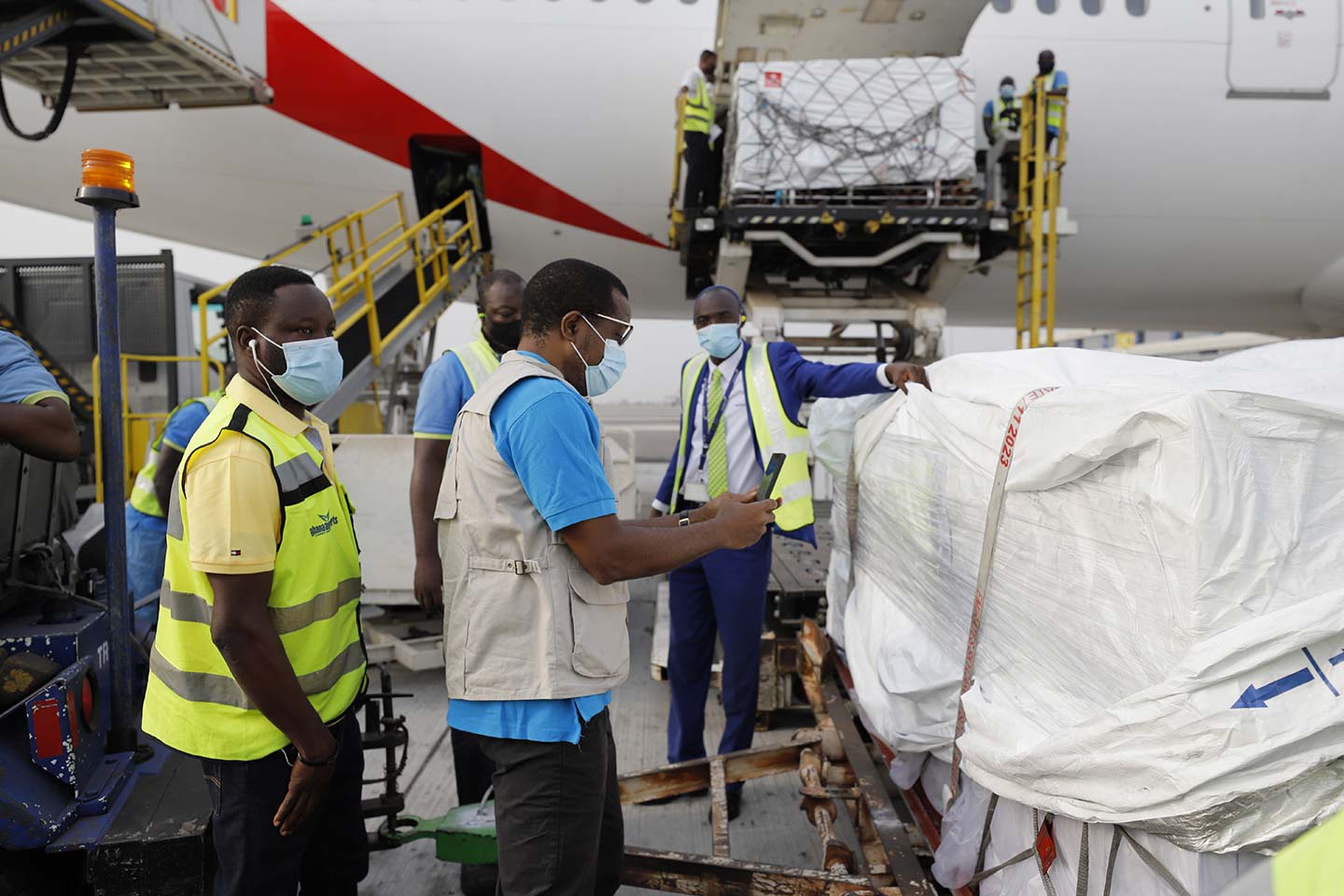
Credit: © UNICEF/UN0421462/Kokoroko/COV
18. 2022: COVAX delivers its billionth dose
A year later, on 16 January 2022, a shipment of 1.1 million COVID-19 vaccines to Rwanda included the billionth dose supplied via COVAX, 90% of which were delivered to lower-income countries.
19. 2022: Gavi changes the way it works in humanitarian settings
Delivering routine immunisation is particularly challenging in countries affected by natural or man-made disasters, hosting large numbers of displaced people, or facing the protracted breakdown of health systems due to conflict and fragility. Yet, such countries comprise a growing share of Gavi’s portfolio. To address this, Gavi’s Board approved the Fragility, Emergencies and Displaced Populations Policy in June 2022. Recognising that these situations are not mutually exclusive and can occur simultaneously, the policy gives more flexibility in where and how Gavi can operate and has since allowed the organisation to offer support to vulnerable populations in Ukraine, Gaza and other conflict-affected regions.
20. 2023: Gavi reaches a billion children
In 2023, Gavi reached another milestone: more than 1 billion children vaccinated through routine programmes since the organisation was founded in 2000, with more than 18.8 million deaths averted as a result. By preventing illness and deaths, vaccines were estimated to have saved countries more than US$ 250 billion over the same period.
21. 2023: Gavi-supported countries break vaccine investment records
Gavi’s model is designed to encourage sustainability and sovereignty for countries, with governments paying more towards their vaccine programmes as their wealth increases. In 2023, Gavi's partner countries set a new record for co-financing, contributing US$ 200 million in one year for the first time.
22. 2024: Gavi supports the world’s first malaria vaccine introduction
On 22 January 2024, Cameroon made history by launching the world’s first routine malaria vaccination programme, with Gavi support. By the end of 2024, some 17 African countries were offering malaria vaccines through their routine childhood immunisation programmes, with more than 12 million vaccine doses delivered to these countries.
23. 2024: African vaccine manufacturing gets a boost
The COVID-19 pandemic highlighted the risks of relying too heavily on vaccine imports from other countries, with many countries in Africa having to wait longer for vaccines to become available because of a lack of local manufacturing capacity. In June 2024, Gavi launched a financing instrument called the African Vaccine Manufacturing Accelerator (AVMA), which will make up to US$ 1.2 billion available over ten years to accelerate the expansion of commercially viable vaccine manufacturing in Africa.
24. 2024: Gavi goes solar
As Gavi reaches its 25th birthday, it faces evolving challenges – including the worsening impact of climate change, which continues to increase the burden of disease in some of the world’s most vulnerable communities. Backed by Gavi funding, the Health Facility Solar Electrification (HFSE) initiative was launched in October 2024, with the goal of building climate-resilient health systems, while also boosting vaccine storage capacity. It will equip more than 1,000 health facilities across Ethiopia, Pakistan, Uganda and Zambia with solar panels to power essential cold chain equipment and other medical devices.
25. 2024: Four new vaccines join the Gavi portfolio
When Gavi started, it provided support for vaccines against six infectious diseases. By 2022 that number had grown to 19, and in June 2024, Gavi added preventive Ebola, routine multivalent meningitis, human rabies and hepatitis B birth dose to its portfolio of supported vaccines.
More from Gavi Staff
Recommended for you
